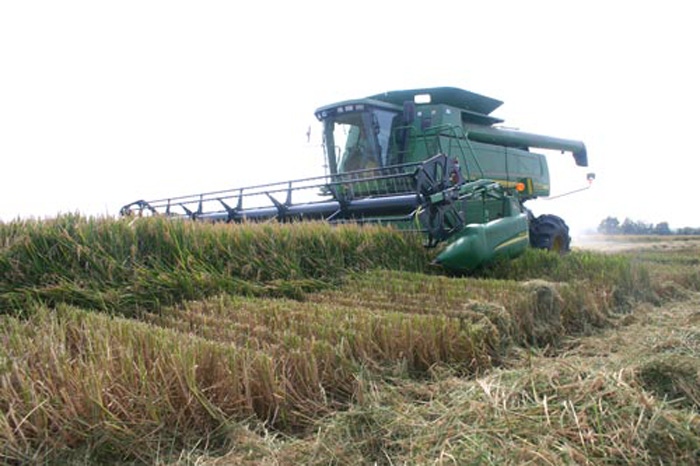February 13, 2013

Rice prices are likely to improve with the expectation that China will buy American rice and the Brazilian crop will be off this year, a rice marketing consultant said at the recent National Conservation Systems Cotton and Rice Conference.
U.S. rice acreage will drop this year but not by much because the price will increase, Milo Hamilton said at the conference held by MidAmerican Farm Publications. He said Texas buyers have benefitted from a 50-cent increase in Texas recently.
The Brazilian rice crop is suffering from a cold, wet year, and the South American country may have to import rice, Hamilton said. If that happens and the Chinese deal is made, “It could be an interesting spring.”
Hamilton told farmers the Chinese like American rice because it is free of cadmium, which is a problem in rice from some other countries. But he warned the quality of American rice is becoming a concern in Latin America. “We have a problem we need to address,” Hamilton said.
Latin American consumers are more discriminating rice purchasers than Americans. Since 2010, heat and co-mingling of varieties have increased the quality issues facing American rice.
Also at the conference, LSU AgCenter plant pathologist Boyd Padgett was honored as the Corn and Soybean Researcher of the Year. Padgett is the regional director of the LSU AgCenter’s Central Region based at the Dean Lee Research and Extension Station in Alexandria.
Researchers, farmers and consultants throughout the state rely on Padgett’s advice for controlling diseases in corn and soybeans.
Rice farmer Christian Richard, of Indian Bayou, was honored as the conference Rice Farmer of the Year. He serves on the Louisiana Rice Promotion Board. He also is the past president of the Louisiana Rice Growers Association and a current member of the LRGA Board of Directors.
Last year, Richard farmed 1,300 acres of rice and 1,700 acres of soybeans.
Later at the conference, Richard told farmers and researchers about the soil fertility challenges on his farm. He said a high amount of calcium prevented the uptake of phosphorous and that he had used chicken litter on his fields with little to no benefits.
Richard’s fields had a high soil pH and a low amount of zinc, said Mississippi State University agronomist Tim Walker. “The pH drives so much of what goes on in the soil.”
High pH is becoming more common in Mississippi, where more irrigation is used and more land leveling is being done to uncover soils low in nutrients. A high pH means plants will take up less phosphorous.
LSU AgCenter agronomist Dustin Harrell gave a primer on growing a second rice crop, or a ratoon crop. He said farmers should decide during the first crop whether to grow another crop. Often, a farmer covers costs with the first crop, then makes any profit from a second crop.
Nitrogen fertilizer at the rate of 90 pounds per acre should be applied immediately after harvest, followed by an immediate flood. But for best results, a harvested rice field should be either mowed or rolled to stimulate growth. Cutting stubble to an 8-inch height has proven best for the highest yield.
Stubble management will result in uniform growth across a field, less disease, better grain quality and higher yield, Harrell said.
Ralph Frazier, LSU AgCenter county agent in Madison Parish, talked about his work on a nitrogen fertilizer project with Dennis Burns, LSU AgCenter county agent in Tensas Parish, and LSU AgCenter agronomist Brenda Tubana. They are using GreenSeeker technology to determine where nitrogen fertilizer should be increased or decreased in a field depending on the intensity of infrared light reflected by plants and detected by a sensor.
With the technology, a healthier plant reflects more infrared light to sensors on the GreenSeeker unit, which communicates with a fertilizer spray rig how much nitrogen should be applied at specific areas in a field.
The technology has been used on corn farms and on cotton farms last year. The results were mixed, with some fields having a decreased yield. But less fertilizer was used, reducing a farmer’s costs.
“I don’t mind giving up a little yield if I’m saving money on inputs,” said Frazier.
LSU AgCenter Chancellor Bill Richardson said the public’s demand for knowledge continues to grow. He said the LSU AgCenter’s website had 219 million hits last year.
Richardson said the LSU AgCenter will have a smartphone field guide app in March for soybean growers.
To help with the increasing use of irrigation, a north Louisiana research facility, the Red River Research Station, will focus on water use issues.
You May Also Like




